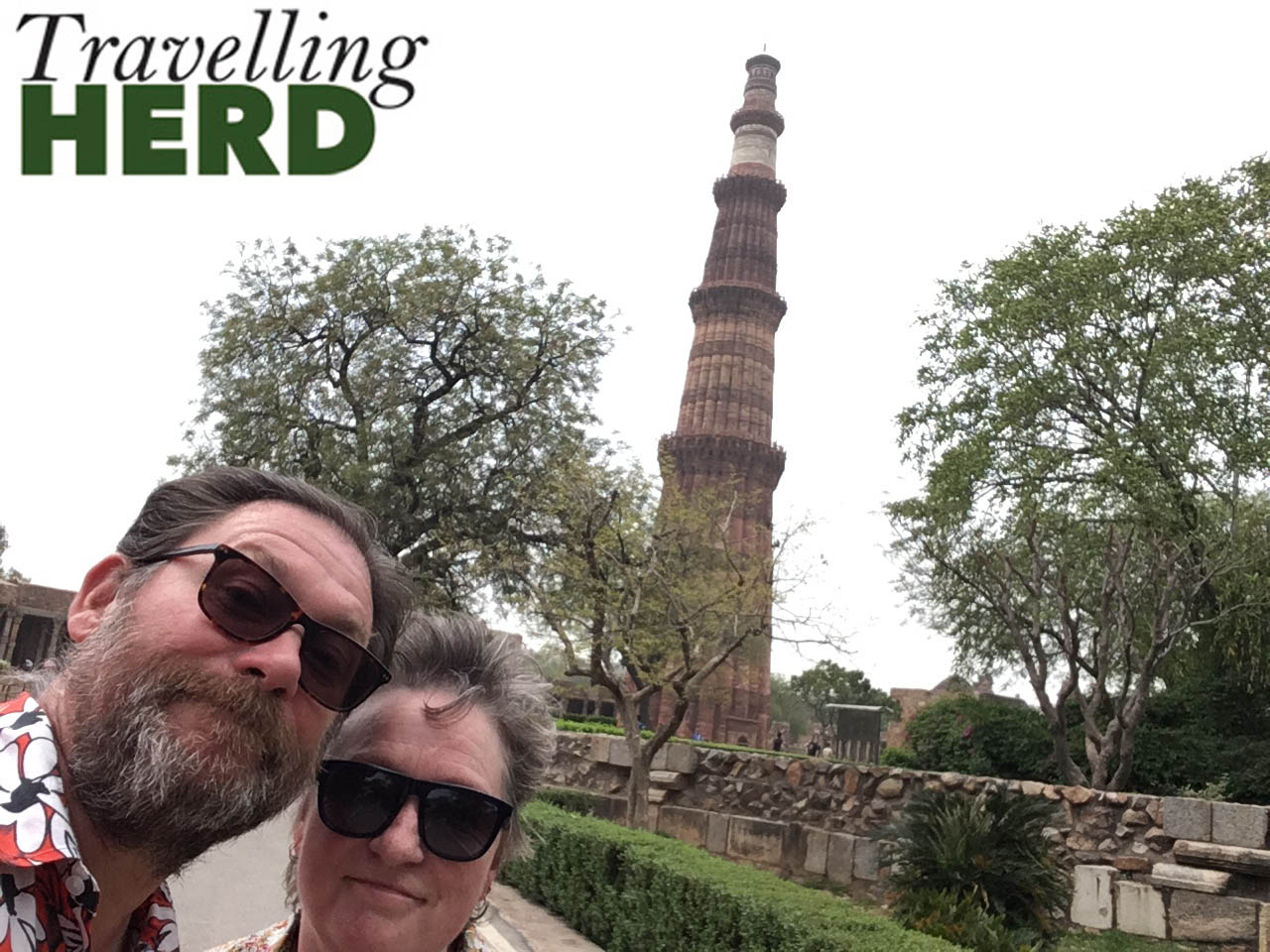Monday 8th April 2019
Robert spent some time studying the map of the city in conjunction with the map of the metro and planned a route for the day on air-conditioned public transport.
Our first destination was the Lotus Temple, also known as the Baha’i House of Worship, and although we had realised that it would not be open – many of the major sights do close on a Monday – we wanted to go and see the exterior.
Even from outside and from afar it is worth a look. As we made our way from the metro to the perimeter of the temple, we were surrounded by a group of young girls. It is one of the truly unfortunate sights in India. The very poor have no proper accommodation, sanitation or food. As a foreigner, you are constantly confronted by children and mothers with babes in arms gesturing for food. Despite feeling a ready sympathy for their plight, and being very conscious of the difference in your own circumstances, all the guide books, and even notices around the station and public places, advise against giving any money. Normally a polite “no” and avoiding eye contact makes people give up.
But on this occasion the girls followed us for a while dancing around us. When one of the girls eventually ran at Robert pushing him from behind he turn into full angry teacher mode. Using “the voice” he shouted “no” and stared them down until they retreated. It does not make walking around Indian cities easy. Matilda subsequently felt really sympathetic towards a small, quiet boy dressed in dirty clothes, who approached us on our way back to the metro station, but we have maintained the “zero tolerance” approach. It does not seem kind or fair or make us feel good, especially as only 10p from us would go a long way for them.
As we write this the news on the TV is all about the debate, between the two leading parties of India who are fighting to win next week’s elections, about poverty and minimum wages for the many in India who have no access to clean water, proper sanitation, housing, adequate food or television. It is a sad political debate, both here and around the globe.
India is the largest democracy in the world and its population is expected to exceed China’s in three years time, so everyone has a vested interest in how this country grows and develops.
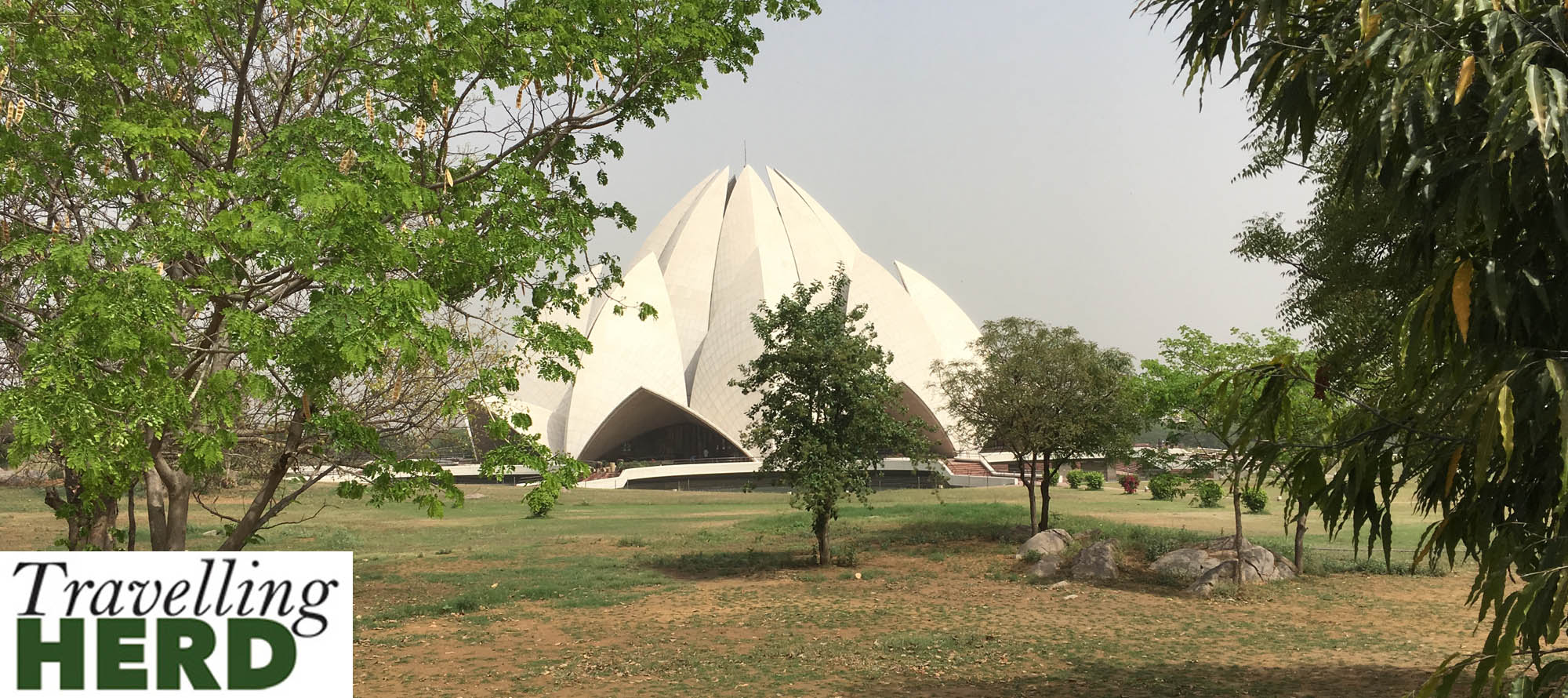
From here we went on to the Mehrauli Archeological Park. This area was made the centre of the Delhi Sultanate in 1193 and by the thirteenth century the small village of Mehrauli had grown up around the shrine of the Sufi saint, Qutb Sahib.
The Alai Darwaza [below] is the gateway to the Qutb Minar tower. Built in 1311 it is one of the earliest buildings in India which uses the Islamic arched construction.
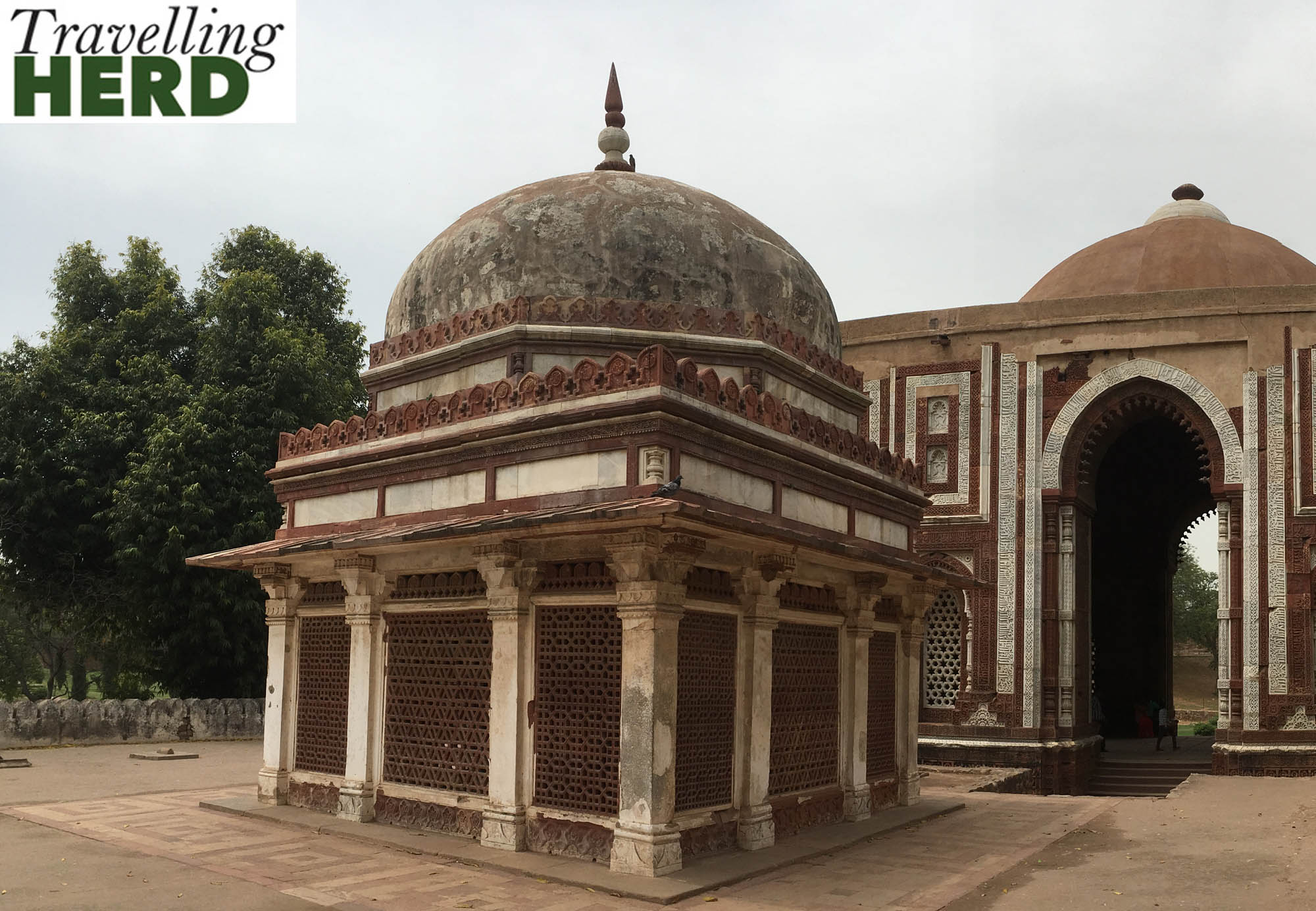
Part of a UNESCO World Heritage site the Qutb Minar [below left] is a five storey minaret, thought to have been based on the Minaret of Jam in Afghanistan. The spiral staircase inside has 379 steps. Construction of the first storey was started around 1192 by Qutbuddin Aibak. In 1220, Aibak’s successor and son-in-law Shamsuddin Iltutmish completed a further three storeys. In 1369, a lightning strike destroyed the top storey. Firoz Shah Tughlaq replaced the damaged storey, and added one more.
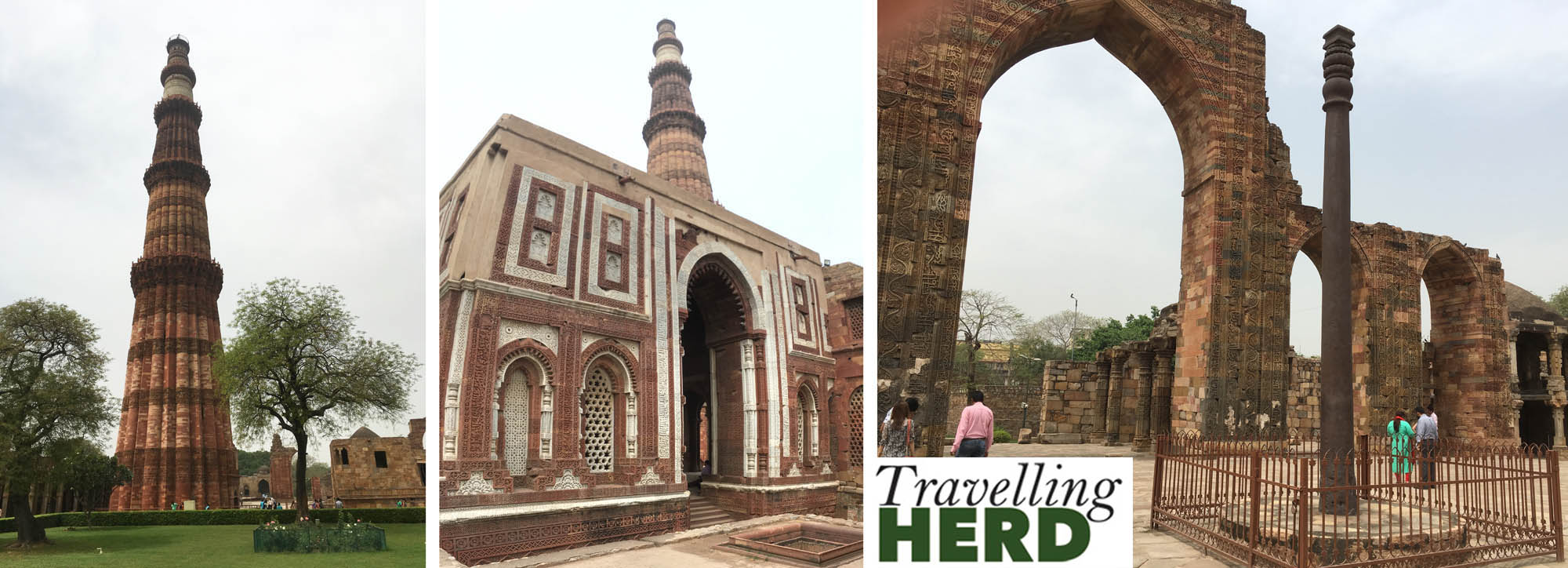
A fourth century iron pillar [above right] known as the Ashoka Pillar, is 23 feet 8 inches high (7.2 metres) and 16 inches in diameter. It is famous for its rust-resistant qualities due to the high phosphorus content of the iron, which protect it from the effects of the Delhi climate.
The carving on the pillars of the Quwwat-ul-Islam Mosque [below] feature many Hindu emblems such as bells and garlands.
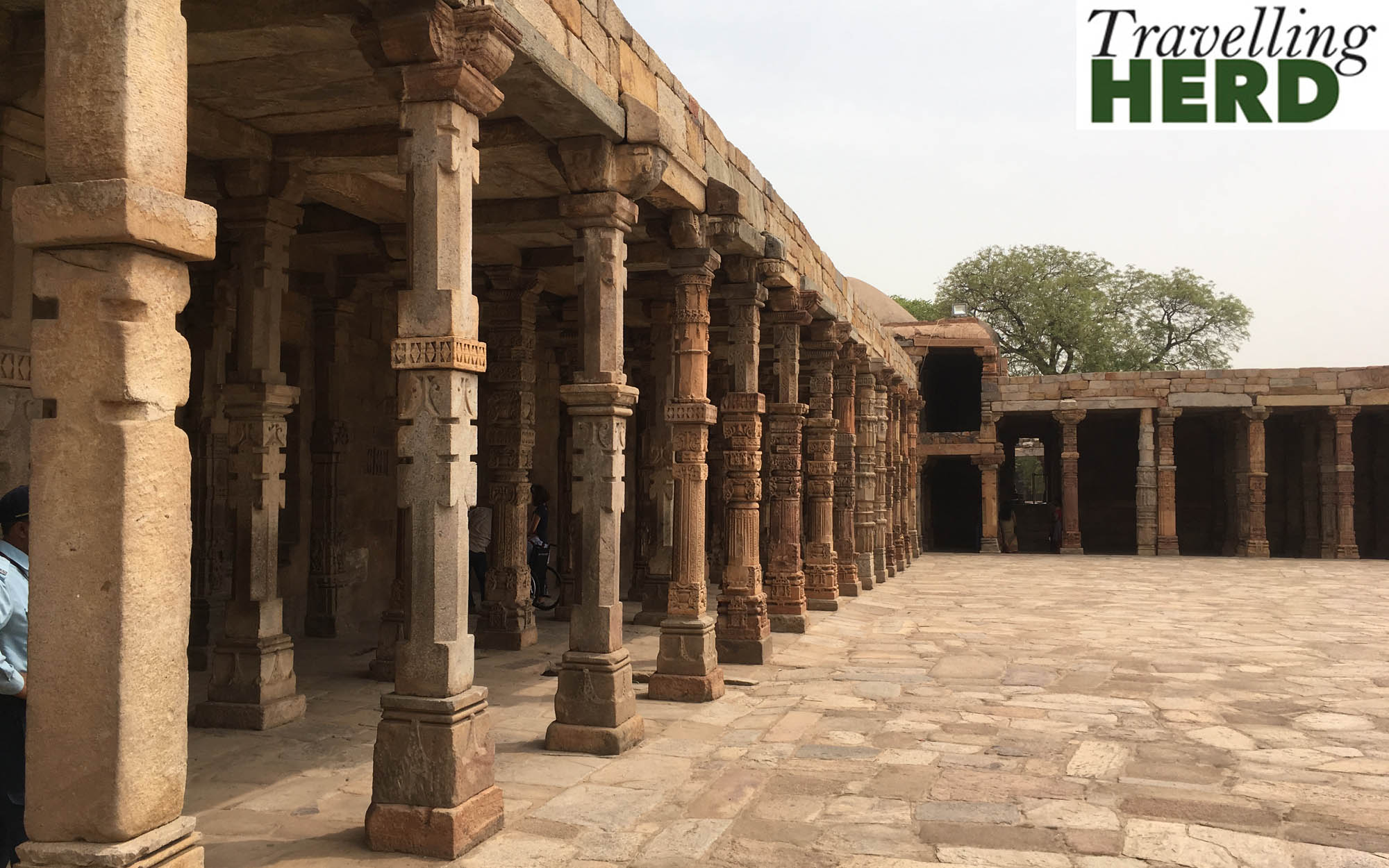
The carving throughout is beautiful and these ruins are reminiscent of both Pompeii’s breadth and scale and Fountains Abbey’s roofless arches open to the skies.
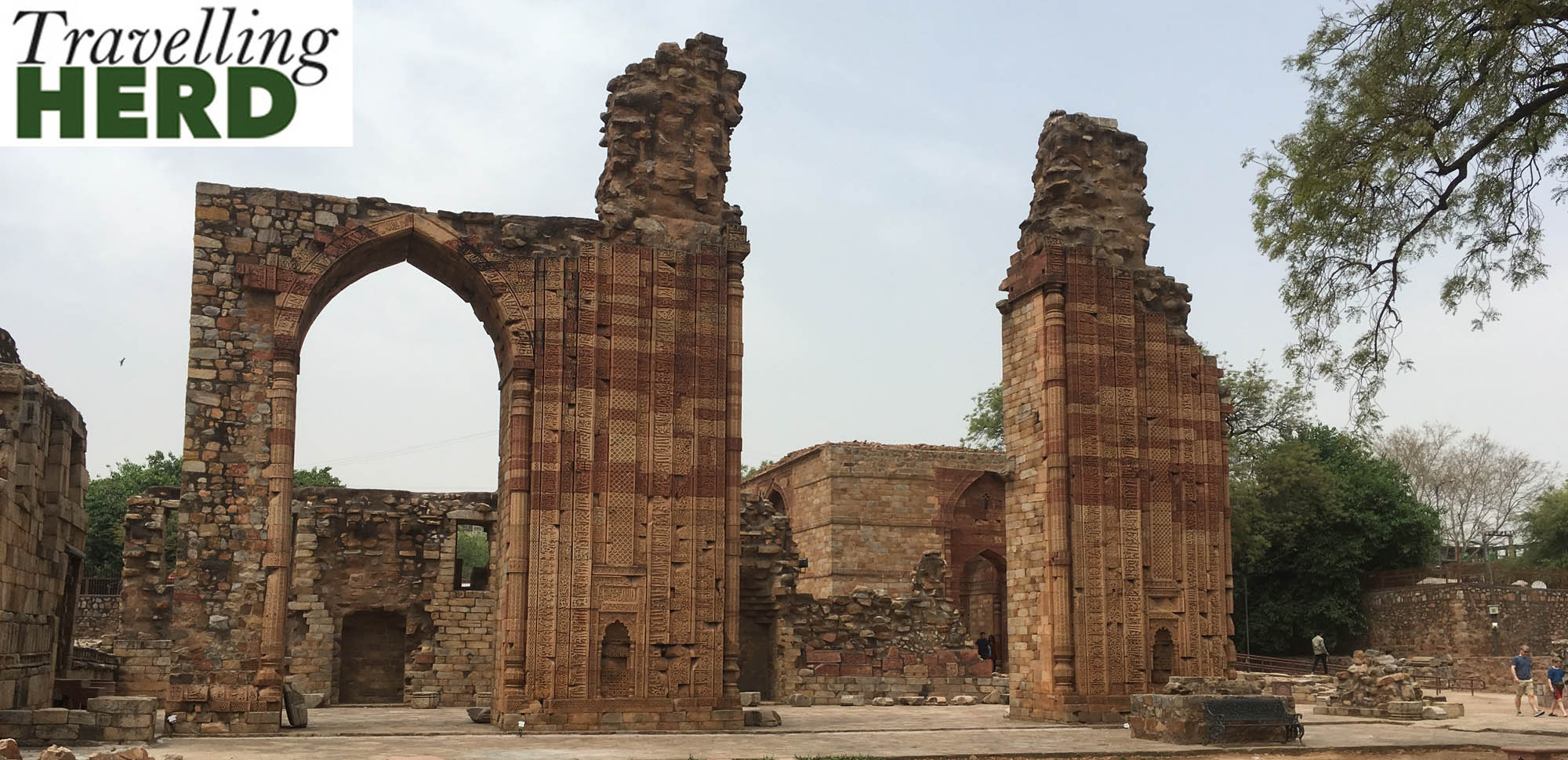
We then went to one of Delhi’s out of town shopping centres in search of the Hard Rock Cafe. At first, our tuk-tuk driver dropped us at an entrance to the mall which the security guards told us was closed. Realising the issue before he drove off, he beckoned us back in and dropped us a few hundred yards up the road where the mall entrance was open and we walked in to see a spotlessly clean shopping centre with the usual international brands. Using Robert’s phone we realised we were close the the New Delhi Hard Rock Cafe but it was proving very illusive. After retracing our steps several times, we were directed down an unprepossessing side-street and through more security to go up some concrete stairs looking like a fire exit to the bar and shop. We had to feel sorry for the staff: friendly and welcoming as always, we were their only customers as renovations to parts of the shopping mall had had a seriously detrimental impact on their custom.
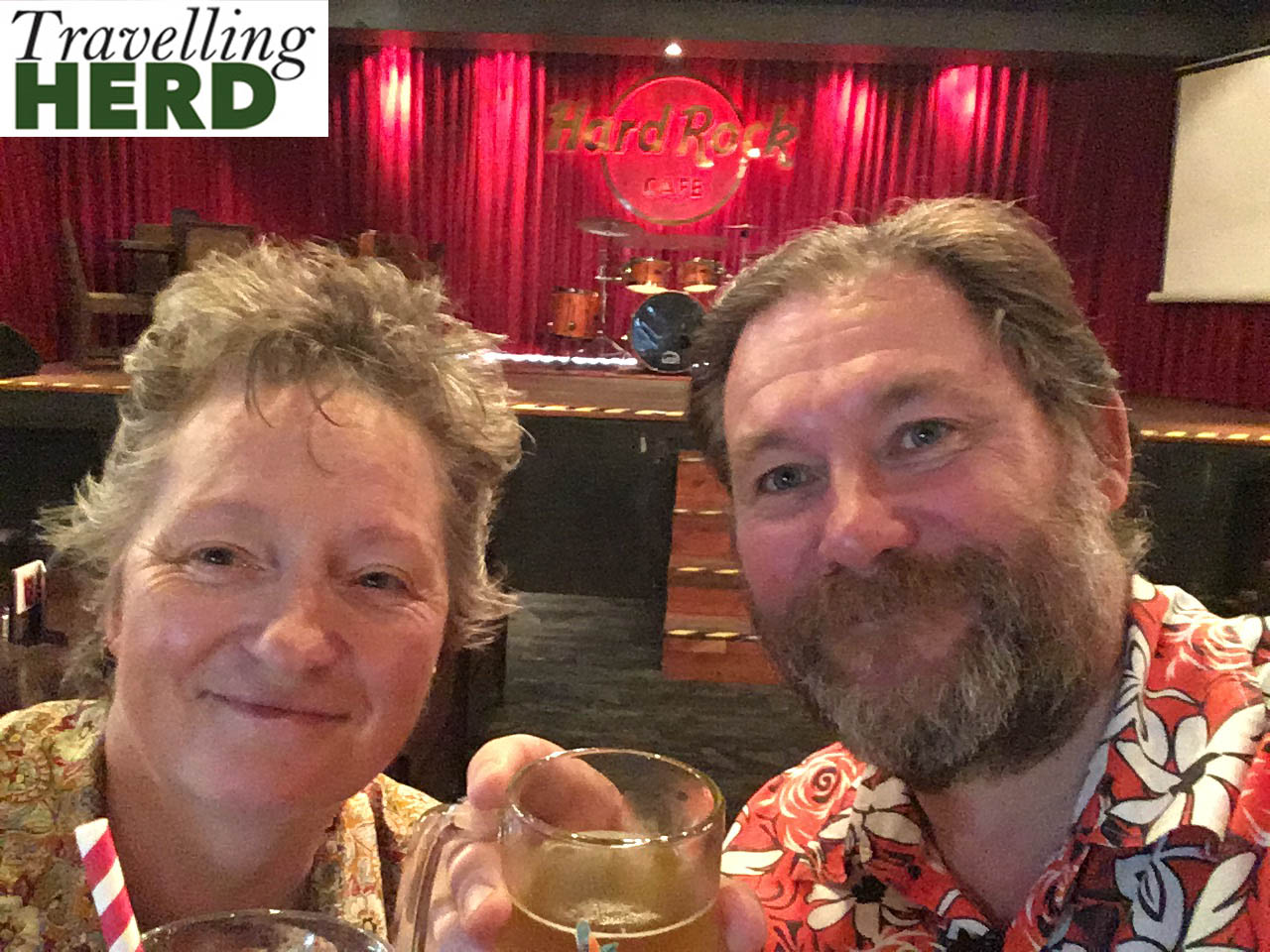
As we had each booked a massage in the hotel spa, we had no reason to linger and walked to the nearby metro for an air-conditioned journey back.
Current Route Map:
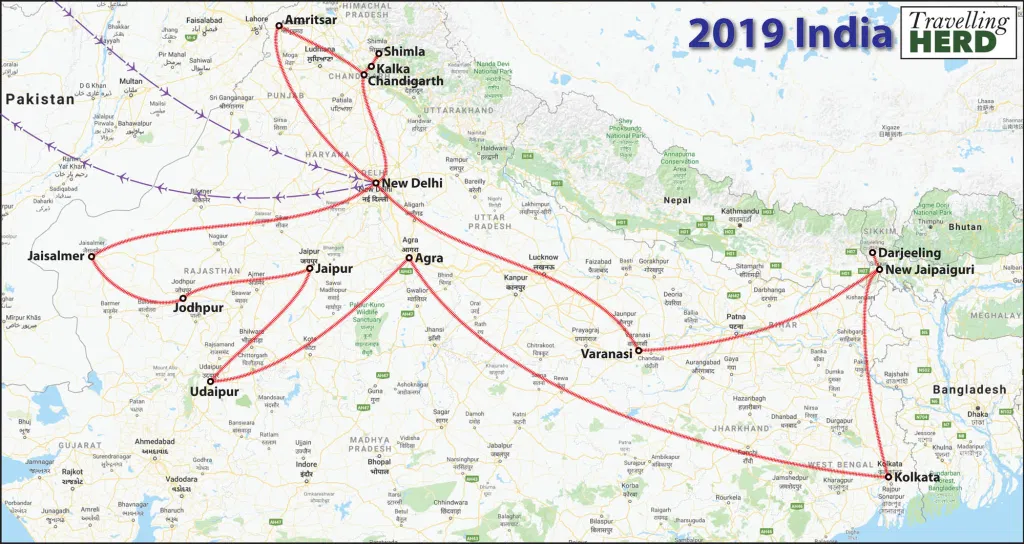
Distance travelled so far:
By Air to Delhi: 4,187miles
By 19 trains around north India: 4,670miles
Selfie of the day:
